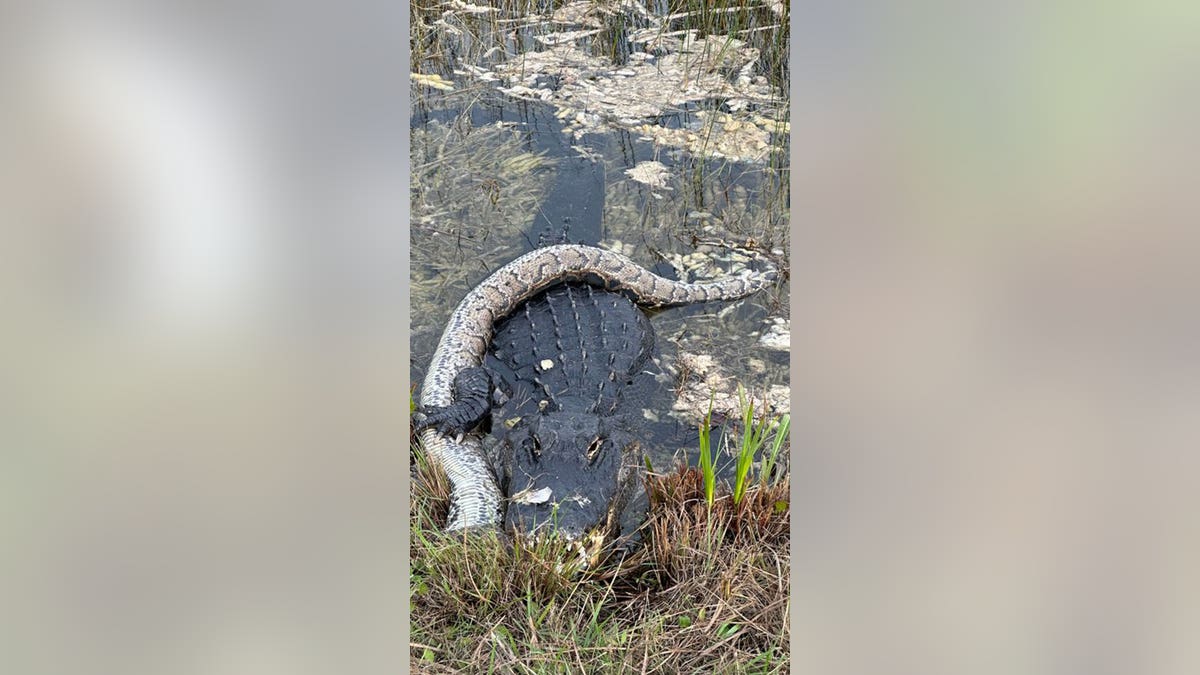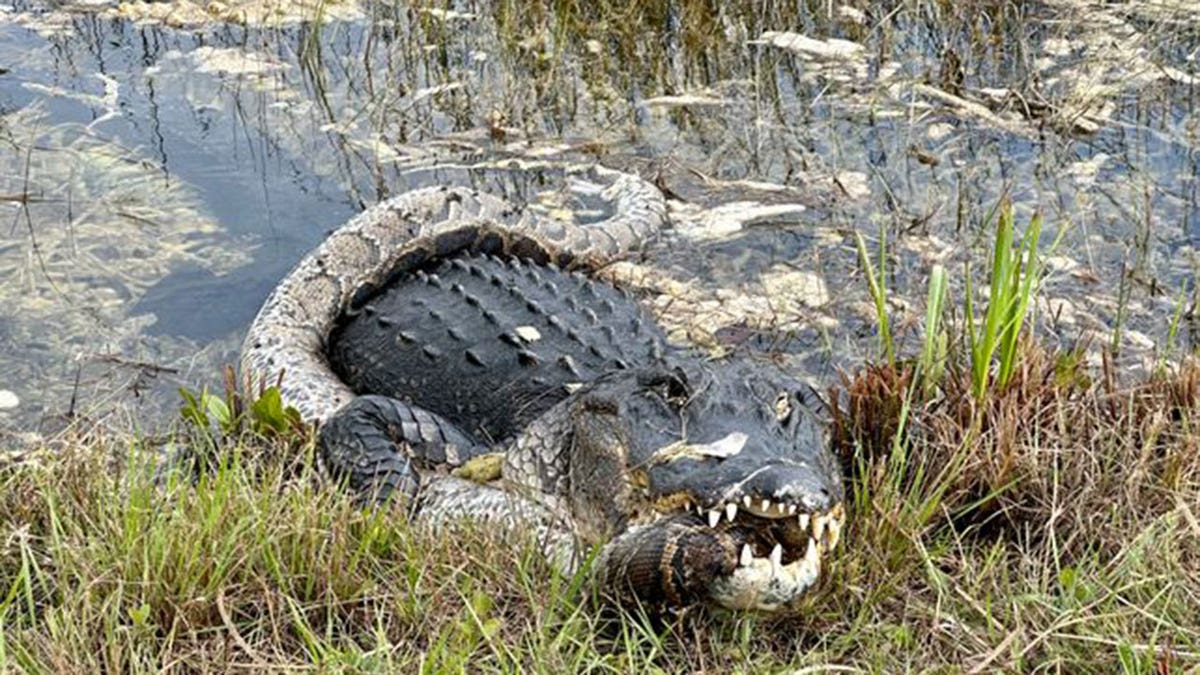Florida alligator caught devouring python in national park
Amateur wildlife photographer calls Everglades experience on Dec. 20, 2023 a "thrill." Credit: Alison Joslyn via Storyful
An amateur photographer in Florida captured video in Everglades National Park that put the "wild" in "wildlife."
Alison Joslyn caught an alligator eating a large Burmese python, a snake not native to Florida, in the Shark Valley portion of the park on Dec. 20 while riding her bike and shared the footage on social media.
"I knew immediately I was seeing something very special," she told Storyful. "I thought both might be dead until the gator opened an eye to look at me! Phew! Score one for the home team!"
Florida Fish and Wildlife Commission (FWC) considers Burmese pythons invasive due to their impact on native wildlife, according to its website.

The large Burmese python can be seen in the alligator's mouth at Everglades National Park on Dec. 20, 2023. (Alison Joslyn via Storyful)
The species is noted to be among the largest snakes in the world and is often found near or in water. Adult Burmese pythons caught in Florida average 6 to 9 feet long, but the largest measured 18 feet, FWC says.
"In Florida, Burmese pythons have been found to prey upon a variety of mammals, birds, reptiles even alligators," FWC states. The agency says the species can be captured and "humanely killed year-round without a permit or hunting license on 32-Commission-managed lands in south Florida."
WATCH: CHRISTMAS INFLATABLE HILARIOUSLY CHASES FLORIDA DELIVERY DRIVER

Video shows the python in the alligator's mouth. (Alison Joslyn via Storyful)

Amateur wildlife photographer Alison Joslyn said she knew she was seeing "something special." (Alison Joslyn via Storyful)
CLICK HERE TO GET THE FOX NEWS APP
The Smithsonian National Postal Museum's website says Everglades National Park is "the only place in the world where Alligators coexist with Crocodiles," and that it's the only place in the U.S. that people can see crocodiles due to the mixture of freshwater from Lake Okeechobee and saltwater from the ocean.
Average visitation for the park is 1 million visitors, according to the National Park Service. It is home to 13 endangered species and 10 threatened species.


